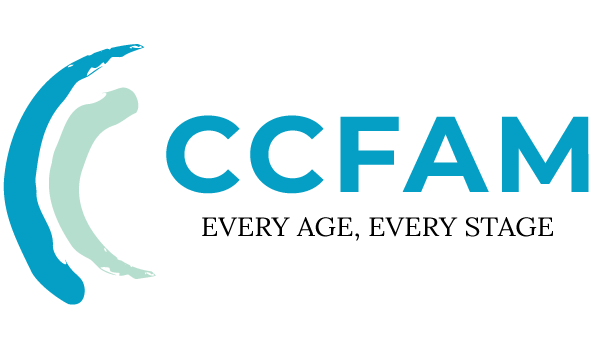03 Jun The Benefits of Adult Counseling for Mental Health
In today’s high-stress world, maintaining mental health is essential. Recent findings from the American Psychological Association’s Stress in America reports indicate that a majority of U.S. adults experience significant distress, often presenting as generalized anxiety, adjustment challenges, or relationship strain. Counseling for adults offers an evidence-based, personalized approach to address these concerns. Unlike generalized self-help, professional therapy delivers individualized care aligned with DSM-5 diagnoses and empirically supported treatments. This guide explains how therapy for adults fosters emotional resilience and improves overall functioning.
How Does Adult Counseling Differ from Adolescent or Geriatric Therapy?
Adult counseling focuses on the developmentally specific needs of working-age adults (roughly 25–64). Compared with adolescent or geriatric therapy, adults often benefit from approaches that address:
- Career-related stressors: Interventions for burnout and performance anxiety, including Acceptance and Commitment Therapy (ACT) techniques [APA Dictionary]
- Midlife transitions: Existential therapy strategies for values clarification and identity reevaluation [APA Dictionary]
- “Sandwich generation” pressures: Skills for balancing dual caregiving roles (supporting children and aging parents) and maintaining boundaries .
What Clinical Benefits Does Therapy for Adults Offer?
Evidence-based adult therapy is associated with improvements across emotional, cognitive, and relational domains. A 2024 NIMH longitudinal report noted outcomes such as:
| Benefit | Mechanism | Efficacy Rate |
|---|---|---|
| Emotional regulation | DBT distress tolerance training | 78% improvement |
| Relational functioning | Attachment-based interventions | 65% enhancement |
| Cognitive restructuring | CBT thought records | 82% effectiveness |
Results vary based on diagnosis, treatment fit, and consistency of attendance. To learn more about how psychotherapies work, see the National Institute of Mental Health overview [NIMH].
Which Adult Therapy Modalities Deliver Optimal Results?
The most effective modality depends on your goals, diagnosis, cultural context, and preferences. Contemporary adult counseling services often use these validated approaches:
1. Phase-Based Trauma Treatment
A widely used three-stage model that helps adults process traumatic experiences while building stability and safety:
- Psychoeducation about trauma responses and nervous-system regulation
- Structured narrative processing (may include expressive or somatic techniques)
- Reintegration planning with relapse-prevention and coping tools
2. Executive Function Coaching (EFC)
For adults with ADHD or acquired executive dysfunction, EFC blends cognitive remediation with behavioral strategies to strengthen:
- Working memory and planning through targeted practice
- Task initiation and follow-through via behavioral activation and environmental design
Other commonly used evidence-based options include Cognitive Behavioral Therapy (CBT), Eye Movement Desensitization and Reprocessing (EMDR), Interpersonal Psychotherapy (IPT), and trauma-focused protocols like Prolonged Exposure (PE) [VA/NCPTSD].
How to Select High-Quality Adult Counseling Services
According to professional guidelines, consider the following when evaluating providers:
- Licensure and credentials: Verify active state licensure (e.g., LPC, LCSW, LMFT, psychologist). You can also consult professional associations’ directories and your state licensing board.
- Treatment fidelity: Look for manualized, evidence-based protocols (e.g., PE for PTSD; CBT for anxiety and depression) and clinicians trained to deliver them.
- Outcome tracking: Ask whether the practice uses measurement-based care with tools such as the PHQ-9 and GAD-7 to monitor progress over time .
- Culturally responsive care: Seek providers who integrate multicultural and intersectional frameworks and adapt interventions accordingly [APA Guidelines].
Breaking Barriers: The Evolution of Teletherapy for Adults
Since the 2020 expansion of telehealth coverage by the Centers for Medicare & Medicaid Services, virtual therapy for adults has shown strong adherence and comparable outcomes to many in-person treatments for mood and anxiety disorders. Teletherapy can reduce travel, improve access, and offer flexible scheduling.
- Coverage resources: CMS Telehealth and HHS Telehealth
- Practice and outcomes summaries: American Telemedicine Association
FAQs About Modern Adult Counseling
1. What distinguishes high-performing adult therapy programs?
Top programs typically feature:
- Measurement-based care with routine outcome monitoring [APA]
- Transdiagnostic strategies that address comorbid conditions efficiently [NCBI Bookshelf]
- Collaborative care models that integrate behavioral health with primary care [AIMS Center]
2. How long until I see results from counseling for adults?
Timelines vary by concern and treatment intensity, but general guidance suggests:
- Acute, focused issues: 6–8 sessions (e.g., solution-focused or brief CBT)
- Complex trauma or longstanding patterns: Several months of phase-oriented care (e.g., 6–12 months)
Many adults notice early gains in 4–6 sessions when therapy is a good fit and attendance is consistent.
3. Does insurance cover therapy for adults?
Most Affordable Care Act (ACA)–compliant plans include mental health and substance use coverage with parity protections. Check your plan’s network, deductibles, and session limits.
- Learn about mental health benefits: HealthCare.gov
- Understand parity protections: HHS Mental Health Parity



Sorry, the comment form is closed at this time.